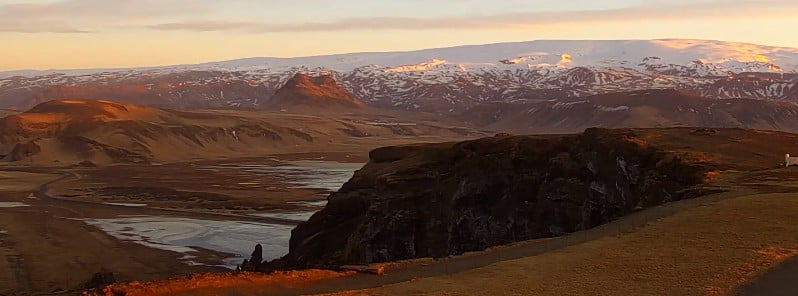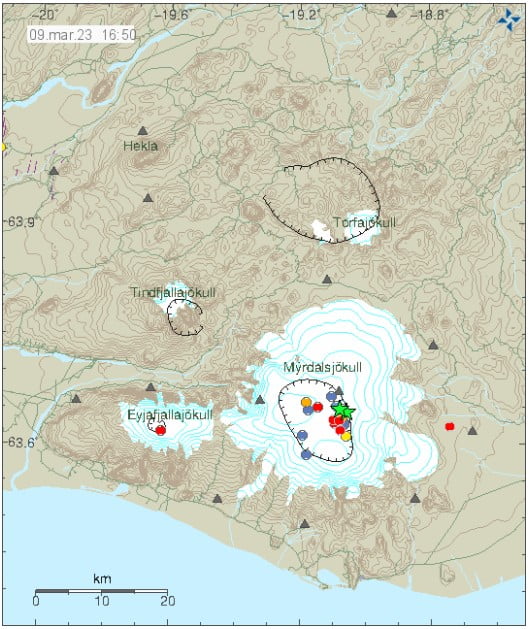Small earthquake swarm at Katla volcano, Iceland

A small earthquake swarm started at Katla volcano, beneath the Myrdalsjökull icecap in Iceland, on March 9, 2023. The last confirmed eruption at this volcano took place in 1918 (VEI 4).
- Katla has historically erupted once every 40 to 80 years, making it statistically long overdue for a new eruption.
The largest earthquakes thus far had a magnitude of 3.3 and 3.4. While some earthquakes are still being reported, it seems the activity has now subsided, with only 9 earthquakes detected over the past 48 hours (M0.4 – 2).

“It is difficult to know for sure what is going on in Katla volcano,” says Jon Frimann of Iceland Geology. “But this activity reminds me of what happened few years ago before a small eruption took place in Katla volcano. If that is going to happen now, I don’t know.”1
According to the Icelandic Met Office, there were numerous earthquakes detected in Myrdalsjökull from February 27 to March 5. The largest earthquake recorded during this time period had a magnitude of 3.2 on February 27.
The last confirmed eruption at Katla took place from October 12 to November 4, 1918, with a maximum VEI of 4. Prior to that, confirmed eruptions with a maximum VEI of 4 occurred in May 1860, June-July 1823, and October 1612. The volcano has also produced numerous eruptions with a maximum VEI of 3 and 5. The earliest confirmed eruption occurred around 6380 BCE.
Geological summary
Katla volcano, located near the southern end of Iceland’s eastern volcanic zone, is hidden beneath the Myrdalsjökull icecap. The subglacial basaltic-to-rhyolitic volcano is one of Iceland’s most active and is a frequent producer of damaging jökulhlaups, or glacier-outburst floods.
A large 10 x 14 km (6.2 x 8.7 miles) subglacial caldera with a long axis in a NW-SE direction is up to 750 m (2 500 feet) deep. Its high point reaches 1 380 m (4 199 feet), and three major outlet glaciers have breached its rim.
Although most historical eruptions have taken place from fissures inside the caldera, the Eldgjá fissure system, which extends about 60 km (37 miles) to the NE from the current ice margin towards Grímsvötn volcano, has been the source of major Holocene eruptions.
An eruption from the Eldgjá fissure system about 934 CE produced a voluminous lava flow of about 18 km3 (4.31 mi3), one of the world’s largest known Holocene lava flows.
Katla has been the source of frequent subglacial basaltic explosive eruptions that have been among the largest tephra-producers in Iceland during historical time and has also produced numerous dacitic explosive eruptions during the Holocene.2
References:
1 Earthquake swarm in Katla volcano – Iceland Geology – March 9, 2023
2 Katla – Geological summary – GVP
Featured image credit: Live From Iceland (stillshot)

Commenting rules and guidelines
We value the thoughts and opinions of our readers and welcome healthy discussions on our website. In order to maintain a respectful and positive community, we ask that all commenters follow these rules.